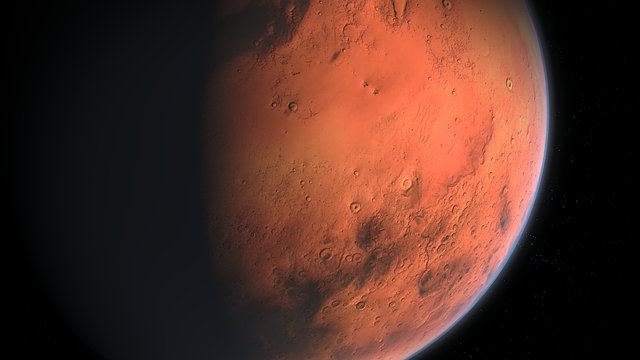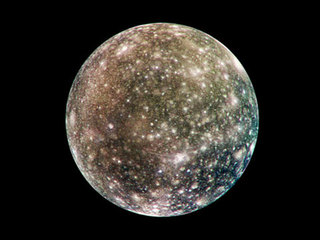*This post may contain affiliate links. This means we may make a commission if you purchase an item using one of our links*
The main differences between Mars and Callisto would be that Mars is a planet with 2 other moons orbiting it whilst Callisto is the 3rd largest moon in our solar system that orbits Jupiter, Callisto is amongst the most cratered entity in our solar system but Mars has even more and Mars is the warmer of the two.
There are numerous other differences between the two so, continue reading for a more detailed look at each of these celestial bodies below along with their similarities and differences.
What Is The Planet Mars?
Table of Contents

Mars, also known as the red planet, is the celestial object that’s the front runner in our entire solar system to become a possible new home for us if terraformed. It is also the 4th farthest planet from the Sun and is one of 4 main line terrestrial planets (not including Pluto) in our solar system.
This means that one year on Mars will take roughly 687 Earth days and a day on Mars is roughly the same as Earth at 24 hours and 37 minutes. It’s axial tilt is also very similar to that of Earth where it is positioned around 25 degrees to the right.
It may not be the largest terrestrial world in our solar system as its diameter is only 6,779km but, it does have the most moons amongst the normal terrestrial planet where two, namely Deimos and Phobos, are currently orbiting the red planet.
Like Earth and the other terrestrial worlds, Mars does have an atmosphere, certainly more visible than that on Mercury but, when compared to Earth’s it is merely 1% of its volume.
As a result it is more susceptible to larger debris striking its surface and is unable to trap in too much heat either. This is why it’s on the colder side with a temperature of around -65 degrees Celsius on average. On the contrary its core is significantly hotter at 1,350 degrees Celsius.
Mars is probably the most explored planet outside of our own, with a multitude of rovers like Sojourner (1997–1997), Opportunity (2004–2018), Spirit (2004–2010), Curiosity (2012–), and Perseverance (2021–) that have landed on the Martian soil to explore it.
Billionaires like Elon Musk and even Jeff Bezos are trying for an opportunity to genuinely have astronauts land on the Martian soil, possibly as early as 2029 so, Mars clearly has a lot interested in its terrain, as a potential substitute for Earth in the future
What Is The Moon Callisto?

Callisto is one of the large moons orbiting Jupiter, the outermost of the Galilean moons, first discovered on 7th January 1610. The surface of this icy world is frozen, but scientists believe an underground ocean could reside beneath the ice.
Even if there’s water on Callisto, it won’t necessarily hold life because the surface is so old. Scientists will need to conduct more research into the moon before determining whether this is a likely possibility.
The ESA’s JUICE (Jupiter Icy Moon Explorer) mission is focused on the three ice moons of Jupiter. It is expected to arrive in 2030 and will focus on learning more about the environment of each, as well as their potential for hosting life.
Scientists estimate that Callisto is around 4.5 billion years old (the same age as Jupiter), and its average distance from the Sun is approximately 778 million km. It has a diameter of 4820.6km, which makes it similar in size to the planet Mercury, and the average temperature is a frigid minus 139.2 degrees Celsius.
Callisto takes seven days to orbit its planet at an average distance of 1,880,000km, and it is tidally locked, meaning the same side of it always faces Jupiter. But this moon experiences less tidal influence than the other Galilean moons because it lies in the orbit of Jupiter’s primary radiation belt.
The name of this moon is derived from the stories of Greek myth. Callisto was the nymph who had an affair with Zeus, the King of the Gods. Upon hearing this news, Zeus’ wife Hera turned Callisto into a star and placed her in the Ursa Major constellation. Interestingly, every moon of Jupiter is named after a Greek figure who Zeus seduced.
Callisto may be the third biggest moon and similar in size to the planet Mercury, but it only has a mass of 107,593,737,963.819 billion kg. That may sound like a lot, but it’s only ⅓ the mass of the similarly sized Mercury.
You may wonder why scientists classify Callisto as a “moon” rather than a planet if it’s almost the same size as Mercury. The reason is simple; planets must orbit the sun, but Callisto orbits one of the planets.
The composition of this frigid world is around 60% rock and iron and 40% ice. The moon has roughly equal amounts of rock and ice, plus the potential for water below the surface. There are also traces of carbon dioxide, organic compounds, and silicates.
This moon is one of the oldest landscapes in the Milky way and the most heavily cratered body in our system. However, scientists believe this could now be a “dead” moon as there are no longer any signs of volcanism or plate tectonics on its surface.
Similarities Between Mars And Callisto
Callisto and Mars do have their odd few similarities, which in this case includes the below:
- Both have a hotter central core.
- Both have an atmosphere and a rocky surface.
- Both are a spherical shape.
- Both are part of the same solar system.
- Both have no rings surrounding them.
- Neither have plate tectonics.
Differences Between Mars And Callisto
In regards to the differences between the two, they include the following:
- Mars is the bigger of the two with a diameter of 6,779km compared to Callisto’s diameter that is 4,820.6km.
- Mars has a magnetosphere (albeit a weak one) whilst Callisto does not.
- Mars has 2 moon orbiting it whilst Callisto has 0 objects orbiting it.
- Callisto orbits Jupiter in an elliptical pattern whilst Mars orbits the Sun in a nearly circular pattern.
- Callisto is tidally locked to Jupiter whilst Mars isn’t tidally locked to any other object.
- Mars has an atmosphere that is 1% the thickness of Earth’s consisting of 95.32% carbon dioxide, 2.7% nitrogen, 1.6% argon and 0.13% oxygen whilst Callisto has a very thin carbon dioxide based exosphere.
- Callisto is one of the most heavily catered entities in our solar system as it has 142 named craters with a lot more smaller one scattered throughout the moon whilst Mars has an 635,000 impact craters.
- A day on Callisto takes 17 days whilst Mars completes a day in 24 hours and 37 minutes.
- Mars orbits the Sun in 687 days whilst Callisto orbits the Sun in 12 years and around Jupiter in 17 days
- Callisto’s density is 1.83 g/cm³ whilst Mars’ density is 3.93 g/cm³.
- In regards to axial tilt, Mars’ is 25 degrees whilst Callisto’s is practically 0 degrees.
- Mars has an average temperature of -65 degrees Celsius whilst Callisto’s temperature is -139.2 degrees Celsius.
- As for mass, Callisto’s is 1.07 x 10^23 kg whilst Mars has a mass of 6.39 × 10^23 kg.
- Mars has a gravitational strength of 3.721 m/s² whilst Callisto’s is 1.236 m/s².
Summary
Mars and Callisto do share a fair few similarities from their mostly terrestrial composition, their spherical shape and their heavily cratered surfaces however, they aren’t all that similar when you look into them deeper.
Whether it be in regards to size, mass, the number of objects that orbit them, the length of their day’s, their orbital pattern or more, Mars and Callisto are just designed to function very differently from one another.

